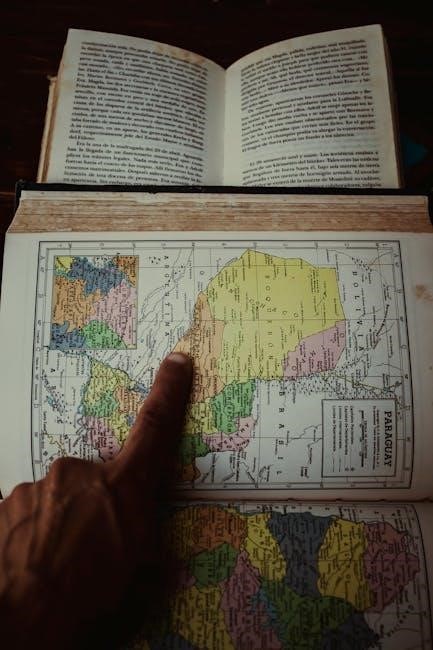Smog Check Reference Guide 2023: An Overview
This guide provides an overview of California’s smog check program in 2023. It covers testing requirements, exemptions, and updates. It will assist vehicle owners in understanding and complying with California emissions regulations.
What is a Smog Check?
A smog check, also known as an emissions test, is a mandatory inspection for vehicles in California to ensure they meet the state’s air quality standards. The process involves evaluating a vehicle’s exhaust emissions to identify pollutants released into the atmosphere.
During a smog check, a certified technician examines the vehicle’s emission control systems, including the catalytic converter, oxygen sensors, and fuel system. The test often involves connecting the vehicle to a diagnostic machine that reads the onboard computer to identify any malfunctions or stored error codes related to the emissions system. A visual inspection is also conducted to check for tampered or missing components.
The primary goal of a smog check is to verify that vehicles are operating cleanly and not contributing excessive pollution. By identifying vehicles with high emissions, the smog check program helps reduce air pollution and protect public health. Successfully passing a smog check is typically required for vehicle registration renewal or transfer of ownership in California.
Purpose of Smog Checks
The fundamental purpose of smog checks is to maintain and improve air quality by identifying and reducing vehicle emissions. Smog checks ensure vehicles meet established emissions standards, which help to minimize the release of harmful pollutants into the atmosphere.
By identifying vehicles that exceed emission limits, smog checks help to pinpoint vehicles with malfunctioning emission control systems. This allows owners to make necessary repairs, ensuring their vehicles comply with environmental regulations. Regular inspections contribute to cleaner air, reducing smog and improving public health.
Smog checks play a crucial role in monitoring vehicle emissions and enforcing compliance. The data collected during smog checks helps regulatory agencies assess the effectiveness of emission control programs and identify areas where further improvements are needed. Ultimately, smog checks contribute to a healthier environment and promote sustainable transportation practices by ensuring vehicles operate cleanly.
Why are Smog Checks Required?
Smog checks are mandated to combat air pollution and protect public health. Motor vehicle emissions are a significant contributor to smog, which poses health risks, especially for vulnerable populations. By requiring regular emissions testing, regulatory agencies aim to reduce the overall level of pollutants released into the atmosphere.
These pollutants can cause respiratory problems, cardiovascular issues, and other health ailments. Smog checks serve as a mechanism to identify and address vehicles with excessive emissions, prompting necessary repairs or replacements. This ensures that vehicles operate within acceptable emissions standards, reducing their impact on air quality.
The requirement for smog checks is a proactive approach to environmental stewardship. It helps to maintain air quality standards, protect ecosystems, and safeguard public health by minimizing the harmful effects of vehicle emissions. Compliance with smog check regulations is essential for promoting a cleaner and healthier environment for all.

California Smog Check Program
California’s Smog Check Program ensures vehicles meet emission standards. This reduces air pollution and protects public health. Regular testing is required for vehicle registration and ownership transfer.
Biennial Smog Check Requirement
Most vehicles registered in California are subject to a biennial smog check. This means that every two years, upon registration renewal, a smog inspection is required. The purpose is to ensure vehicles continue meeting emission standards over time. This requirement helps maintain air quality and environmental health throughout the state.
The DMV renewal notice will indicate “Smog Check Required” if your vehicle needs testing. This notice serves as a reminder to schedule a smog inspection before your registration expires. Failure to comply with the biennial smog check requirement can result in the inability to renew your vehicle registration.
Certain vehicles may be exempt from the biennial requirement, such as those less than eight model years old. However, even these vehicles may require a smog check upon change of ownership. Always refer to your DMV renewal notice or consult the California DMV website for specific requirements.
Smog Check Requirements Upon Change of Ownership
In California, a smog check is typically required when a vehicle changes ownership. This ensures that vehicles being newly registered by a new owner meet current emission standards. The seller is usually responsible for providing a valid smog certificate to the buyer at the time of sale, before transferring the vehicle’s title;
This requirement applies even if the vehicle recently passed a biennial smog check. The change-of-ownership smog check provides an additional layer of assurance for compliance. There are some exceptions, such as vehicles transferred between family members or vehicles that are less than four years old.

Diesel vehicles model year 1998 and newer also require a smog check upon change of ownership. Knowing the specific requirements related to change of ownership is crucial for both buyers and sellers to ensure a smooth and legal vehicle transaction, adhering to California’s emission regulations.
Vehicles Requiring Smog Checks
In California, most vehicles are required to undergo regular smog checks to ensure they meet the state’s stringent emission standards. Generally, gasoline-powered vehicles model year 1976 and newer need to be tested biennially, meaning every two years, as part of the vehicle registration renewal process.
Diesel vehicles model year 1998 and newer are also subject to smog check requirements. The specific requirements can vary depending on the vehicle’s age and location within California. Some areas have more stringent testing requirements than others, particularly those designated as enhanced areas due to higher pollution levels.
Vehicles registered out of state but operating within California may also be subject to smog check requirements upon initial registration in the state. Staying informed about your vehicle’s specific requirements is essential for compliance. Always check the DMV’s website for the most up-to-date information.
Vehicles Exempt from Smog Checks (Pre-1976)
California law provides exemptions from the biennial smog check requirement for certain vehicles, primarily based on their model year. Vehicles manufactured before 1976 are generally exempt from the mandatory smog check inspections. This exemption acknowledges that older vehicles were built to different emissions standards than modern cars.
While pre-1976 vehicles are exempt from the regular smog check, owners must still ensure that the vehicle’s emissions control systems are intact and functioning correctly. Tampering with or removing emissions equipment on any vehicle, regardless of its age, is illegal and can result in penalties.
It’s also important to note that while exempt from the biennial smog check, these vehicles may still be subject to inspection if they are sold or change ownership. In such cases, a smog check may be required to ensure the vehicle meets the emissions standards applicable at the time of its original manufacture. Always consult the California DMV for the most accurate information.

New Regulations and Updates
California’s emissions regulations are constantly evolving. Stay informed about new smog check requirements, changes affecting fleet vehicles, and any updates to testing procedures to ensure compliance.
2025 Emission Testing Requirements
Starting January 1, 2025, California’s emission testing requirements are evolving, impacting vehicle owners and fleet operators across the state. Under these new regulations, fleets operating within California or entering the state will face revised compliance standards designed to further reduce emissions and improve air quality.
These changes mean a greater emphasis on regular testing and adherence to stricter emission limits. Vehicle owners and fleet managers should prepare for these changes by ensuring that their vehicles are well-maintained and meet the updated emission standards. This may involve upgrading older vehicles, implementing more rigorous maintenance schedules, and staying informed about the latest testing procedures.
The California Air Resources Board (CARB) will likely release detailed guidelines and resources to help vehicle owners and fleet operators navigate these new requirements. Keeping abreast of these updates is crucial for avoiding penalties and ensuring continued compliance with California’s stringent environmental regulations. These measures aim to create a cleaner, healthier environment for all Californians.
Changes Affecting Fleet Vehicles
Starting in 2025, fleet vehicles operating in California will face significant changes regarding smog check requirements. New regulations aim to tighten emission standards for fleet operations, compelling businesses to ensure their vehicles meet stringent environmental criteria.
These changes include more frequent smog checks and stricter emission limits, potentially requiring fleets to invest in newer, cleaner vehicles or retrofit existing ones. Fleet managers should prepare for increased operational costs associated with compliance.

The California Air Resources Board (CARB) will likely implement enhanced monitoring and enforcement measures to ensure fleet compliance. Businesses must stay informed about the specific changes affecting their vehicle types and operational areas. Non-compliance could result in substantial fines and operational disruptions.
Fleet operators should consider developing comprehensive emission management strategies, including regular maintenance, driver training on eco-friendly driving practices, and investment in alternative fuel vehicles where feasible. Staying ahead of these regulatory changes is crucial for maintaining operational efficiency and avoiding penalties within California’s increasingly stringent environmental landscape. This proactive approach will support both compliance and sustainability goals.

Smog Check Process
The smog check process involves a visual inspection, functional inspection, and emissions testing. Vehicles failing any part of the inspection will require repairs and retesting to achieve compliance.
What Happens During a Smog Check Inspection?
During a smog check inspection, a certified technician performs several tests and inspections to ensure a vehicle meets California’s emissions standards. The process begins with a visual inspection, where the technician checks for visible smoke, leaks, and the presence of required emissions control components. They ensure that the vehicle’s catalytic converter, oxygen sensors, and other related parts are present and appear to be functioning correctly.
Next, a functional inspection is conducted, evaluating the vehicle’s onboard diagnostic (OBD) system. The technician connects to the OBD system to check for any stored diagnostic trouble codes (DTCs), which can indicate potential issues with the engine or emissions system. The OBD system also provides data on the performance of various sensors and components, allowing the technician to assess their functionality.
The emissions test itself involves measuring the levels of pollutants emitted by the vehicle’s exhaust. This is typically done using a dynamometer, which simulates driving conditions while the vehicle’s exhaust is analyzed. The technician measures the levels of hydrocarbons (HC), carbon monoxide (CO), and oxides of nitrogen (NOx) to determine if they are within acceptable limits. If the vehicle fails any part of the smog check inspection, it will need to be repaired and retested to pass and comply with California regulations.

Out-of-State Vehicles
Vehicles initially registered from out-of-state must undergo a smog check. There are also provisions for temporary exemptions. This ensures compliance with California emissions standards upon registration within the state.
Smog Requirements for Initial Registration
When registering a vehicle in California that was previously registered in another state, a smog check is generally required to ensure it meets California’s stringent emissions standards. This applies even if the vehicle recently passed an emissions test in its previous state of registration.
The purpose of this requirement is to verify that the vehicle’s emissions control systems are functioning correctly and that the vehicle is not a high emitter. California has stricter emissions standards compared to many other states, and this initial smog check helps to maintain air quality within the state.
Before attempting to register your out-of-state vehicle, locate a licensed California smog check station. The inspection will include a visual check of emissions components. It also involves a functional test of the vehicle’s onboard diagnostic system. This ensures everything is operating as designed. Failing the smog check will require repairs before registration can proceed.
Temporary Smog Exemption Application
In specific situations, a temporary smog exemption may be available for vehicles located out-of-state and requiring California registration. This exemption is typically granted when the vehicle is temporarily located outside of California and obtaining a smog check is impractical or impossible. However, these exemptions are not common and are subject to strict criteria.

To apply for a temporary smog exemption, you’ll generally need to submit an application to the California DMV. The application should include documentation that supports the reason for the exemption request. This documentation could include proof of out-of-state residence, military deployment orders, or other valid reasons for the vehicle’s absence from California.
It’s important to note that temporary exemptions are not automatically granted. The DMV will review each application on a case-by-case basis. They will determine if the circumstances warrant an exemption. If approved, the exemption is typically valid for a limited time. The vehicle must undergo a smog check upon its return to California. This ensures compliance with state emissions regulations.

Specific Vehicle Information
This section provides details on specific vehicles, including drive cycles for certain makes, and specific requirements for diesel vehicles. It aims to offer tailored information for various vehicle types.
Ford, Mercury, Lincoln, Mazda Drive Cycle for Smog Tests
The Ford, Mercury, Lincoln, and Mazda drive cycle is a specific sequence of driving conditions designed to prepare your vehicle for a smog test. This cycle ensures that the vehicle’s onboard diagnostic system is ready and all necessary monitors have completed. Completing the drive cycle can help avoid a “not ready” result during the smog check, which would lead to a failed test.
The drive cycle typically involves a combination of highway and city driving, including periods of acceleration, deceleration, and steady cruising. Consult your vehicle’s owner’s manual or a trusted mechanic for the precise steps of the drive cycle specific to your model. Ensure safety and adherence to traffic laws during the drive cycle.
By properly executing the Ford, Mercury, Lincoln, and Mazda drive cycle, you can increase the chances of your vehicle passing the smog test on the first attempt, saving time and money. Remember to address any known issues before the test.
Diesel Vehicle Smog Check Requirements (Model Year 1998 and Newer)
Diesel vehicles, model year 1998 and newer, are subject to specific smog check requirements in California. These requirements are designed to ensure that diesel vehicles meet the state’s emission standards and contribute to cleaner air. Diesel smog checks typically include a visual inspection of the vehicle’s emission control components, such as the diesel particulate filter (DPF) and the catalytic converter.
The inspection also involves testing the vehicle’s exhaust for opacity, which measures the amount of particulate matter emitted. If a diesel vehicle fails the smog check, it may require repairs to the emission control system. Regular maintenance, such as replacing the DPF, can help ensure that diesel vehicles pass the smog check.
Owners of diesel vehicles should be aware of the specific smog check requirements for their vehicle’s model year and make sure to keep their vehicles properly maintained to comply with California’s emission regulations.

Troubleshooting and Compliance
This section addresses common issues encountered during smog checks and provides guidance on resolving them. It also covers compliance procedures for high emitters and steps to take after failing a smog check.
Notice to Submit to Testing (High Emitters)
Certain vehicles, identified as potential high emitters, receive a “Notice to Submit to Testing.” This notice mandates a compliance test to ensure the vehicle meets California’s stringent emissions standards. This requirement stems from the state’s commitment to reducing air pollution and maintaining environmental quality.
The notice specifies a deadline for completing the test and submitting the results. Failure to comply can result in penalties, including registration suspension. Vehicle owners receiving this notice should promptly schedule a smog check at a licensed station.
The testing process for high emitters is similar to a standard smog check, but may involve additional scrutiny and diagnostic procedures. Technicians will assess the vehicle’s emissions control systems and identify any malfunctions contributing to excessive pollution.
If the vehicle fails the compliance test, repairs are necessary to bring it into compliance. The Bureau of Automotive Repair (BAR) offers resources and assistance to vehicle owners needing repairs, including financial assistance programs for eligible individuals. Once repairs are completed, a retest is required to verify compliance and clear the vehicle’s record.
What to Do if Your Vehicle Fails a Smog Check
Receiving a failed smog check result can be frustrating, but it’s essential to understand the next steps. The first action is to carefully review the Vehicle Inspection Report (VIR) provided by the testing station. This report details the reasons for failure, pinpointing specific emissions issues or component malfunctions.
Before pursuing repairs, consider obtaining a second opinion from another licensed smog check station. This can help confirm the initial diagnosis and ensure accurate identification of the problem. Once the issue is verified, explore repair options from qualified mechanics experienced in emissions-related repairs.
California’s Bureau of Automotive Repair (BAR) offers resources, including a Consumer Assistance Program (CAP), which provides financial assistance for emissions-related repairs to eligible consumers. Take advantage of these resources to alleviate repair costs.
After repairs, a retest is mandatory to confirm compliance. Ensure the repairs addressed the issues identified in the initial VIR. Upon passing the retest, you can proceed with your vehicle registration. Retain all documentation, including VIRs and repair invoices, for your records.
